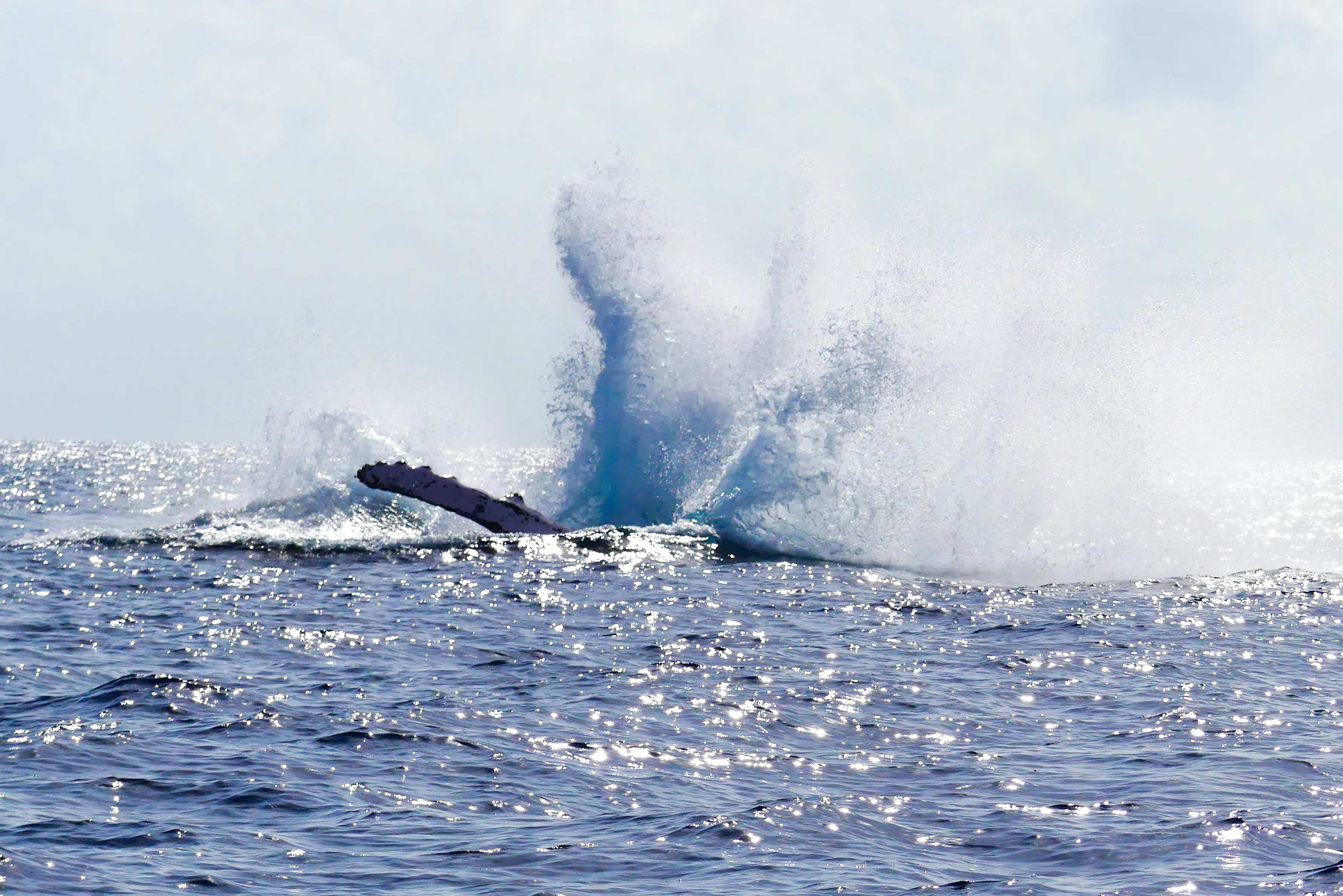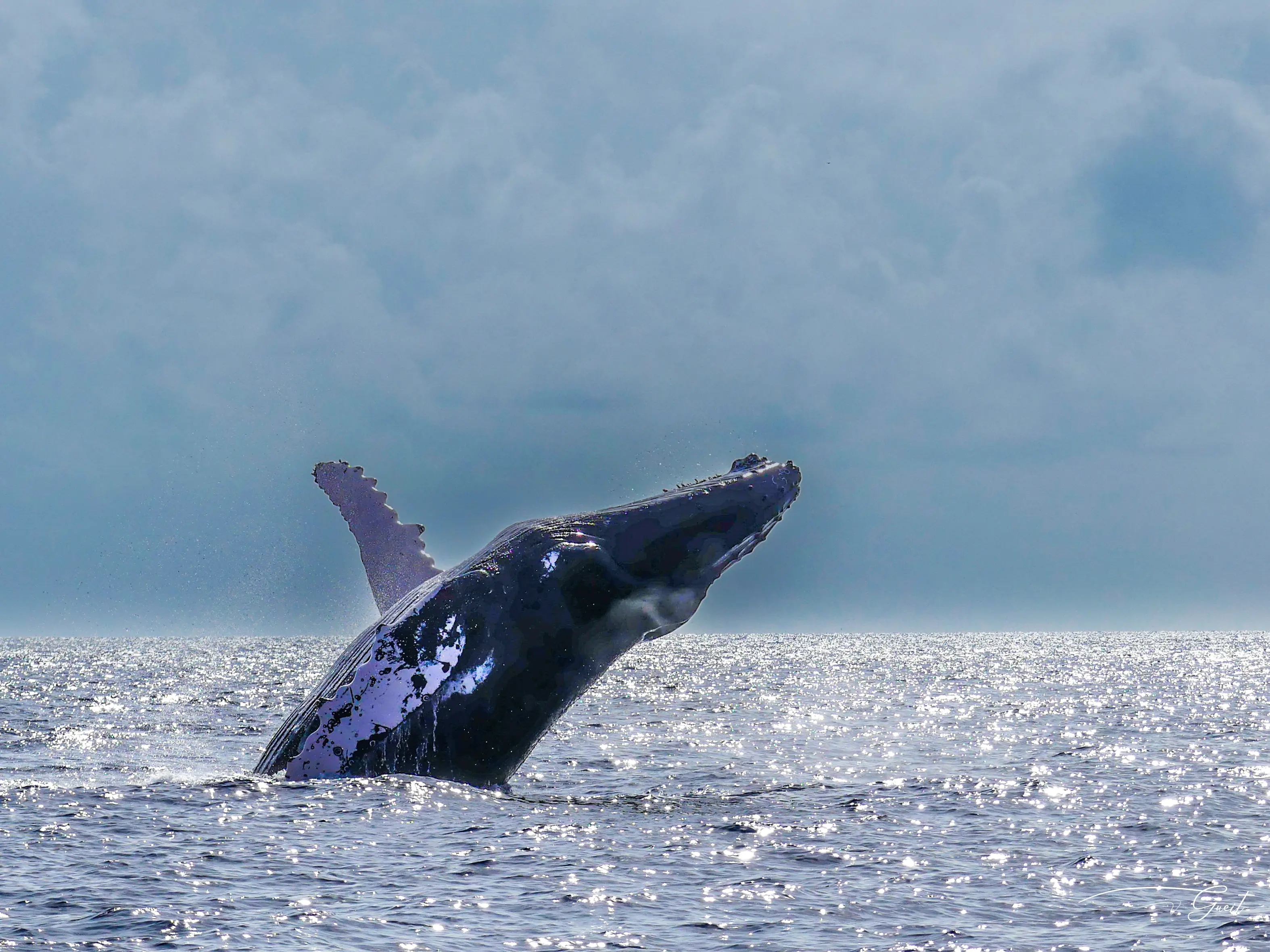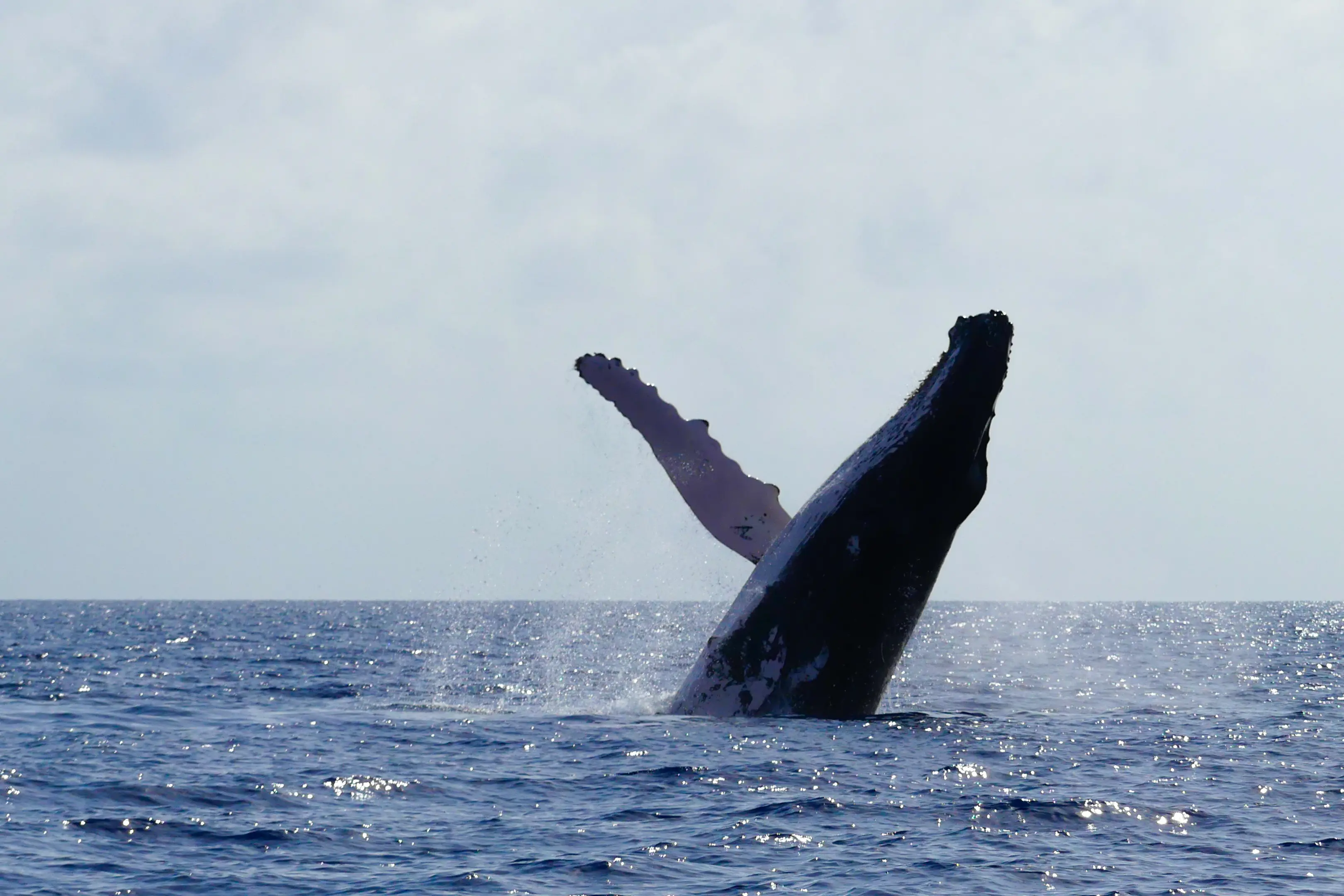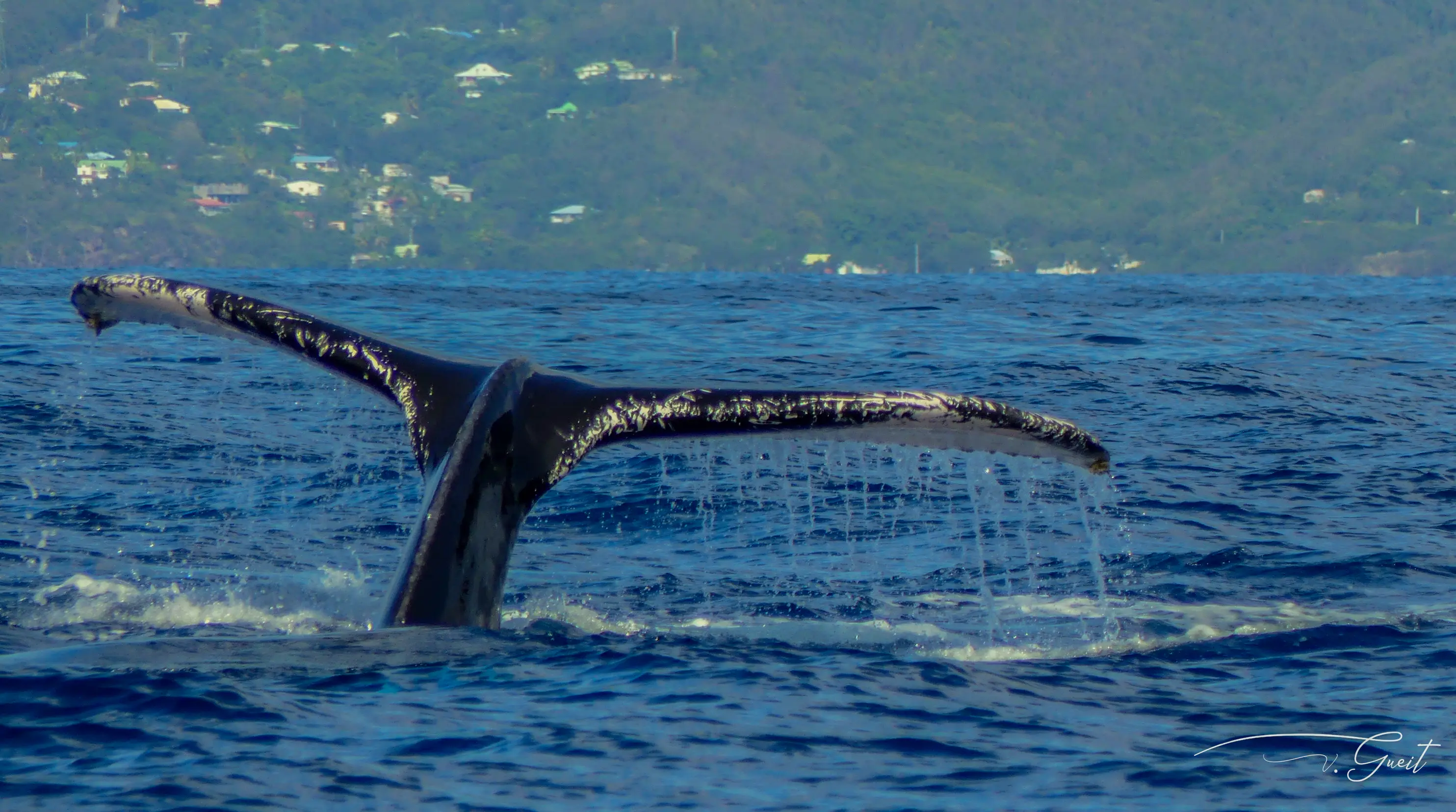When to see Whales in Guadeloupe?
- coraliebrossardpro
- May 4
- 3 min read

The islands of Guadeloupe offer a wonderful playground for sea and nature lovers.
and nature lovers. All year round in Guadeloupe, in the Caribbean Sea off the leeward coast of Basse-Terre, home to numerous species of dolphins and cetaceans.
Humpback whales join them in Guadeloupe from December to May.
See whales in Guadeloupe: An exceptional sea excursion to experience during your stay in Guadeloupe.
When to see whales in Guadeloupe: We tell you all about the humpback whale migration period in Guadeloupe.
Unlike the female sperm whales resident in Guadeloupe waters, humpback whales are highly migratory. They can travel thousands of kilometers, up to 25,000km per year.
They transit from their polar feeding grounds, where they feed mainly on small fish such as krill and herring, and stock up on food for around 4 months of the year.
They then return to their tropical or subtropical breeding grounds, where they spend the winter giving birth in warm waters, lasting around 4 months.
You might ask, “But what do whales do the rest of the time? »
Well, if they join these two zones, the whales will take around 2 months to travel from north to south and the same time to travel from south to north (i.e. around 10,000km) per journey.
During this migration period, and for as long as the whales remain in the warm waters of Guadeloupe, they do not feed, and some can lose considerable weight.
It's as if they were fasting for almost 8 months.
Did you know that only male whales sing?
Scientists around the world offer several hypotheses for this. One of the most likely is that males sing to attract females during the mating season, to communicate with each other and define the boundaries of their playgrounds.
When is the best time to go whale watching in Guadeloupe?
After their long migration, humpback whales reach the Caribbean in December. Whales are thus present in Guadeloupe every year from December to May.
After mid-calving, the whales and their calves offer us some wonderful sightings, as the young discover life and share some truly happy moments alongside their mothers.
During this period, the males also honor us with their presence, providing us with incredible acoustic eavesdropping.
Whales have a lot to teach us.
Researchers around the world are discovering more and more every year about their ways of communicating and their migrations.
Listening to the song of the Whale is an unimaginable moment, as the male emits a sound that can be heard over 1000km away. Listening aboard the boat, using the hydrophone, is quite impressive and promises a memorable moment of sharing.
Description of your whale watching excursion in Guadeloupe with Soleil Excursions.
We'll be waiting for you at the small fishing port of Baillargent in Pointe-Noire on the leeward coast. Our comfortable bimini-covered boat can accommodate up to 12 people, so your excursion will be a small one.
On board, your captain Naël, an AGOA qualified cetacean guide, local boy, former fisherman and lover of the sea, will be delighted to share his experience and knowledge of these marine mammals with you.
Now you're ready for a 3-hour cetacean-watching outing in their natural environment in Guadeloupe. You'll appreciate the driving, the shared experience, and the respectful approach to the environment and the animals.
Whales, and what other cetaceans can you spot in Guadeloupe?
You could almost say that there's a 90% chance of spotting dolphins all year round in Guadeloupe.
Female sperm whales and various dolphin species are resident in our waters.
Only male sperm whales and humpback whales are migratory species.
So it's not unusual to see sperm whales in Guadeloupe, sometimes even in groups.
Every whale, dolphin and sperm whale excursion in Guadeloupe is unique and incomparable!
At the heart of the AGOA sanctuary in Guadeloupe, the pantropical spotted dolphin is the most common sight, but we can also observe fraser dolphins, bottlenose dolphins, pilot whales, pseudo-orcas, sometimes killer whales and, during the migration season, humpback whales.
It's important to bear in mind that these are wild animals and that we're sailing in their territory, so there's never any guarantee of seeing whales or cetaceans in their natural environment.
We keep repeating that they are the only ones who decide whether or not to let themselves be observed. During your sea excursion, we'll TRY together to observe cetaceans in their natural environment.
Book your dolphin, whale and sperm whale excursions in Guadeloupe here.
Crédits photos : Valérie Gueit.
- Source : Soleil Excursions





Comments